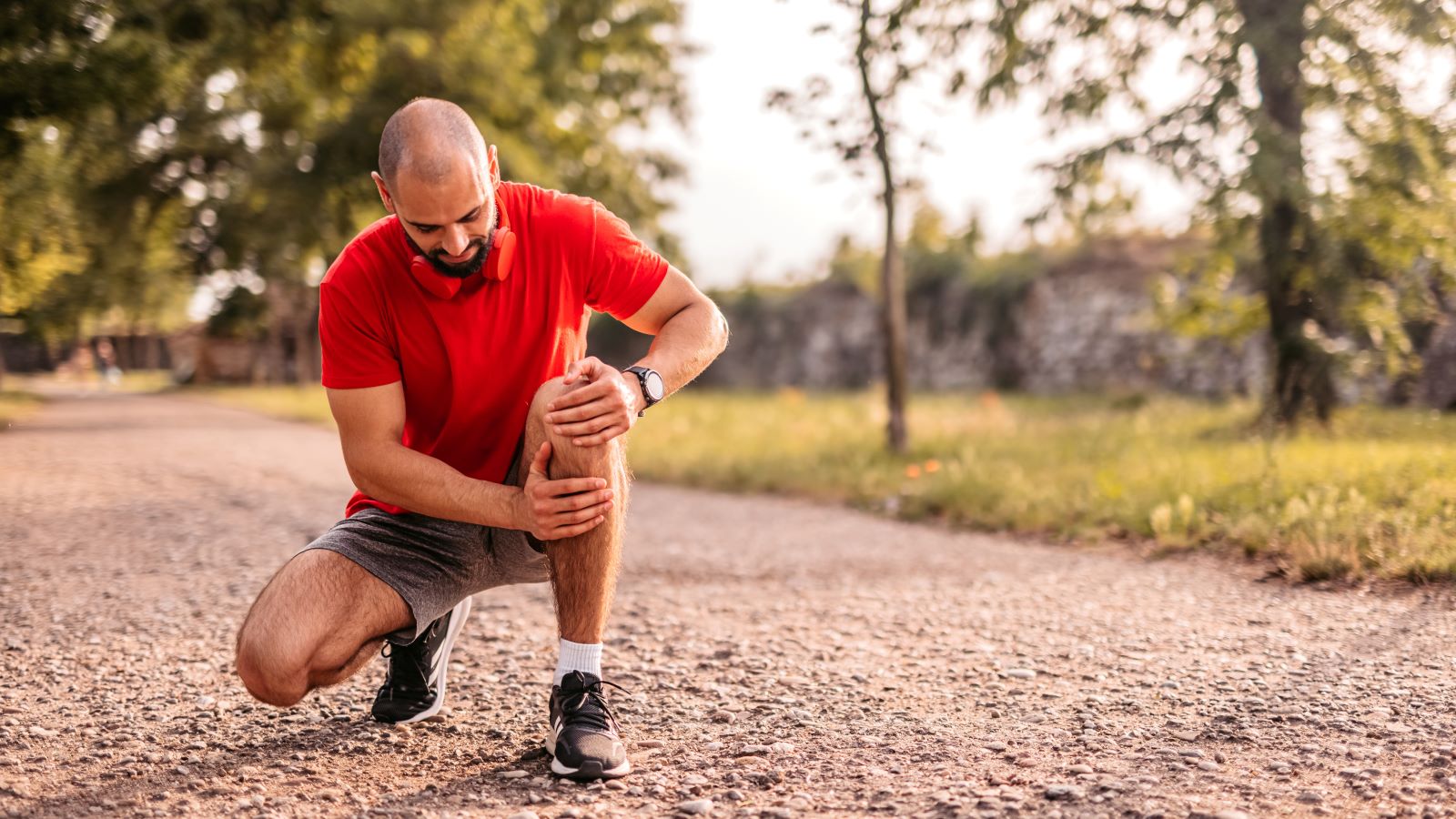<< Back
4 Most Common Knee Injuries by Age

September 16, 2025
Your knees don’t care if you’re 16 or 60. One wrong twist on the soccer food, or too many flights of stairs, and suddenly something’s not right.
“Knee pain is the most common complaint I see on a daily basis,” says Logan Petit, MD, a sports medicine specialist at the Connecticut Orthopaedic Institute. “Knees are built for movement, but that also makes it more prone to injury.”
So what’s behind your knee pain – and how can you keep them strong through every stage of life? Here’s what you need to know about the most common knee injuries.
1. Kids and teens: Growth plates and growing pains.
Active kids often experience knee pain from sprains, strains or irritation near the growth plates – areas of developing bone. In extreme cases, these can lead to fractures.
“Children’s bodies are still growing, and their bones haven’t fused, which makes them more susceptible to injuries,” says Dr. Petit. “Sports, roughhousing or even jumping the wrong way can cause problems.”
The best prevention? Keep it simple:
- Encourage warm-ups and stretching.
- Take time to rest when you can. This is the easiest way to prevent overuse.
- Don’t ignore pain – early care prevents long-term issues.
> Related: 5 Ways to Protect Your Knees as You Age
2. Young adults: Ligament and overuse injuries.
High-impact sports and intense workouts can take a toll on your knees – especially if your form is off or you’re not letting yourself recover. Quick pivots, sudden stops or awkward landings can put the anterior cruciate ligament (ACL) and medial collateral ligament (MCL) at risk. Add in long-distance running or repetitive training, and overuse injuries like tendinitis and patellofemoral pain become common, too.
“Active adults often push hard without realizing how much stress they’re putting on their knees,” says Dr. Petit. “Overuse and poor conditioning are common culprits for injury.”
To protect your knees, be mindful with your training:
- Cross-train and strengthen your quads and hamstrings.
- Focus on form, not just intensity.
- Don’t power through pain that sticks around.
> Related: What NOT to Do to Keep Your Knees Healthy
3. Middle age: Wear-and-tear and early arthritis.
By your 40s and 50s, your knees start showing the effects of years of use. Old injuries, daily stress and early cartilage breakdown can lead to soreness and stiffness – even if you haven’t had a recent injury.
“As cartilage wears down, knees become less cushioned and more prone to pain and swelling,” says Dr. Petit. “You may not remember a specific injury – but your knees feel it anyway.”
But you don’t have to wait for pain to become serious before doing something about it:
- Try low-impact exercise like swimming or cycling.
- Consider physical therapy for ongoing pain.
- Maintain a healthy weight to ease pressure on joints.
4. Older adults: Osteoarthritis and joint changes.
By your 60s, osteoarthritis is the most common cause of knee pain. Cartilage wears away, which can lead to swelling, stiffness and limited mobility.
“Knee replacement is an option for some, but many people benefit from nonsurgical treatments,” says Dr. Petit. “Physical therapy, joint injections and lifestyle changes can make a big difference.”
To support aging knees, try these tips:
- Stay active with walking, yoga or water aerobics.
- Use supportive shoes or assistive devices when needed.
- Discuss joint preservation options with your doctor.
> Related: 6 Knee Injuries That Can Cause Arthritis
When to see your doctor.
From kids to older adults, these common knee injuries may look different at each stage of life — but early care is key to protecting your joints.
If your knee pain lingers, your joint feels unstable or swelling doesn’t go away, get it checked out.
Early care can help you avoid long-term damage and get back to the activities you love.
“Come talk to us early to get a plan started,” says Dr. Petit. “Because no matter how old you are, your knees should support the life you want to live.”